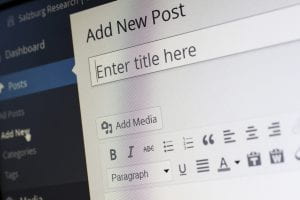
Michaelmode / Pixabay
I think many would be quite affronted to hear they are poor users of the web. Educators in particular would argue otherwise. However, ETL501 has shown me that I was a poor user of the web without even knowing it. Explicit teaching of search techniques and consideration of copyright, cybersafety and digital literacy need to be included as a consistent element in programs (Trucano, 2016). The padagogy wheel (Carrington, 2016), is a very useful tool to quickly narrow down the type of useful apps to fit a purpose. Carrington describes the underlying principle of the wheel must be driven by the pedagogical purpose of the task (para 3), not using the tech for its own sake.
According to Morris (2018), the value of a blog can cover 18 literacies. But I particularly liked Morris’s comment that a blog is a blank canvas to be set up as you like. A blog space can evolve with the class and students can have the opportunity to decide what is valuable for them on a blog. Sheko (2019) gives real purpose to children’s blog writing with a whole class having the ability to read and respond to each other’s work. I can really see value in this for so many students. My access to laptops is good for some classes but very limited with others. Providing consistency of opportunity across grades is tricky so our use of ICT can be limited at times.
Flipped learning as described by Earp (2016) would be more useful for a high school environment. In a primary school, I think it would work very well as extension activities for our top students in stage 3. Their motivation to prepare for classes via new homework content would be more interesting than learning a list of spelling words by rote every day. Perhaps I may change my mind on this as I work my way through the modules.
Carrington, A. (2016, June 20). The padagogy wheel. Educational Technology Solutions. https://www.educationtechnologysolutions.com.au/2016/06/padagogy-wheel/
Morris, K. (2018). Why teachers and students should blog: 18 benefits of educational blogging. Primary Tech. http://primarytech.global2.vic.edu.au/2013/03/08/the-benefits-of-educational-blogging/
Sheko, T. (2019). Using the Medium blogging platform to teach critical and digital literacies. SCIS Connections, (110). https://www.scisdata.com/connections/issue-110/using-the-medium-blogging-platform-to-teach-critical-and-digital-literacies-in-art
Trucano, M. (2016, November 16). Revisiting the digital native hypothesis. World Bank Blogs. https://blogs.worldbank.org/edutech/revisiting-digital-native-hypothesis

